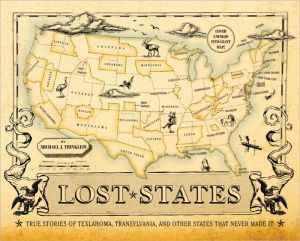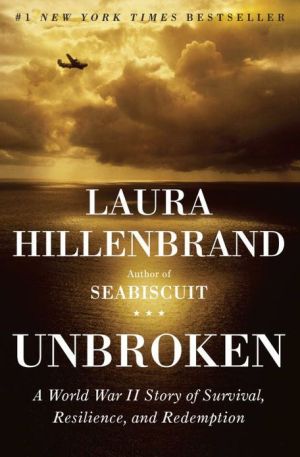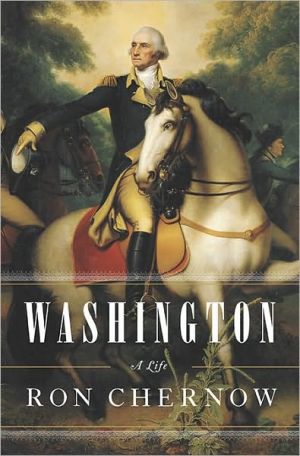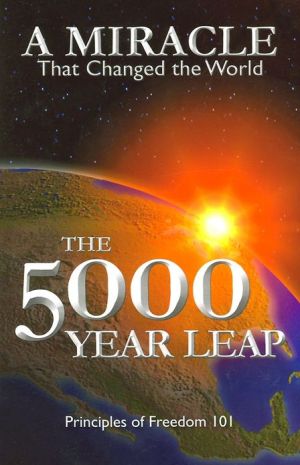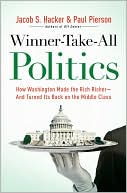Lost States: True Stories of Texlahoma, Transylvania, and Other States That Never Made It
Everyone knows the fifty nifty united states—but what about the hundreds of other statehood proposals that never came to pass? Lost States is a tribute to such great unrealized dreams as West Florida, Texlahoma, Montezuma, Rough and Ready, and Yazoo. Some of these states came remarkably close to joining the Union. Others never had a chance. Many are still trying. Consider:\ \ • Frontier legend Daniel Boone once proposed a state of Transylvania in the...
Search in google:
Everyone knows the fifty winners but what about the hundreds of other statehood proposals that never worked out? Lost States is a tribute to such great unrealized states as West Florida, South California, Half-Breed Tracts, Rough and Ready, and others. History buffs will be entertained and enlightened by these bizarre-but-true stories: Frontier legend Daniel Boone once proposed a state of Transylvania on the borders of Indiana and Illinois. (His plan was resurrected a few years later with the new name of Kentucky.) Residents of bucolic South Jersey wanted to secede from their "filthy" north Jersey neighbors and form their own union. The Gold Rush territory of Nataqua could have made a fine state but since no women were willing to live there, they had to settle for being part of California. Accompanying the stories are beautiful full-color original maps detailing how these states' boundaries might have looked, along with images of real-life artifacts and ephemera. Lost States is a quirky reference book for history buffs, geography geeks, and anyone who enjoys lush, fascinating cartography. Library Journal Most readers might not know that there was once a plan to carve a new state called Lincoln from northern Idaho and eastern Washington, or that east Texas could have been called the state of Jacinto. Trinklein, who has written and produced PBS documentaries, has put together an entertaining book about the many failed proposals for states in American history. Listing the "lost states" alphabetically by proposed name, the book ranges from early settlements such as Charlotina in the mid-1700s (i.e., not a lost state, but a lost colony), proposed as a territory covering what became several Midwest states, to the 1974 proposal of the state of Navajo in the Southwest. There were greedy schemes like mercenary William Walker's Sonora proposal in California and urban movements to make states out of cities, e.g., New York and Washington, DC. Trinklein uses historical sources and overlays the proposed states upon reproduced period maps to show colorfully where they would have existed. He makes the more complex schemes understandable and uses humor to move the stories along. VERDICT This book is geared to the general reader and has a larger format that encourages perusal. It is recommended for history, geography, and general trivia buffs.—Bryan Craig, MLS, Nellsyford, VA
LOST STATES\ TRUE STORIES OF TEXLAHOMA, TRANSYLVANIA, AND OTHER STATES THAT NEVER MADE IT \ \ By MICHAEL J. TRINKLEIN \ QUIRK BOOKS\ Copyright © 2010 Michael J. Trinklein\ All right reserved.\ ISBN: 978-1-59474-410-5 \ \ \ Chapter One\ ABSAROKA \ Just what we need: Another squarish western state.\ You may laugh at the notion of Absaroka becoming a state, but the same people who proposed the idea may have persuaded your family to visit this region when you were a kid.\ The story goes like this: Because the area was so desolate, local businesspeople figured they needed a monumental attraction to convince people to visit.\ So they carved Mount Rushmore.\ Granted, I'm leaving out a lot of detail, but the point is that many of the big thinkers who pushed for the giant president heads also thought it would be nifty to have their own state.\ At least that's what they proposed back in the 1930s. Absaroka would have sliced off sections of South Dakota, Montana, and Wyoming to create the forty-ninth state. The boundaries on my map are conjectural because Absaroka enthusiasts produced several different maps.\ Petitions circulated, especially in South Dakota, and aggressive proponents stamped out license plates and even held a Miss Absaroka pageant in 1939. Since no follow-up contest ever occurred, I assume the winner is still wearing her tiara.\ Even today, there remains a certain economic logic to Absaroka. The state would be the nation's top producer of a particularly valuable commodity: grass. There may be no better place to grow the stuff. The region's grass farmers earn a tidy income-because cows really like to eat grass. And people really like to eat cows.\ Americans are also fascinated with the men who tend the cows, so that's become another economic engine for the area. For dudes who want the real cowboy experience, no other setting can match Absaroka. It's not uncommon for city slickers to spend $2,000 a day for the privilege of sleeping on the ground, drinking water from a creek, and watching horses poop (hopefully not in the same creek).\ And the name? Absaroka comes from a Crow word meaning "children of the large-beaked bird." So if Sesame Street's Big Bird ever has a baby, they have to name him Absaroka, don't you think?\ ACADIA\ Or Just Maine. Time for a Divorce?\ Today's Maine has a split personality. The south is filled with fancy folk for whom the word summer is a verb. In the north are hardscrabble Mainers living in a still-wild country of forests and mountains. Increasingly, the two groups have little in common. So in 1998, Republican representative Henry Joy sponsored a bill to study the idea of splitting the state in two.\ Northerners supported the plan. They were sick of the regulations that, they believed, limit their livelihood. They want to shoot more fauna and chop more flora. Southerners, on the other hand, would prefer that everyone enjoy more civilized activities, such as growing organic blueberries or hosting Shakespeare festivals. If only the northerners could shed their genteel neighbors to the south, they could ramp up their economy by capitalizing on the resources that grow, swim, and molt throughout the region.\ What would the new state be named? Many wanted to call it "Maine," which would force the lower half of the state to rename itself with a more appropriate moniker-perhaps "North Massachusetts." Others have argued that the upper half should change its name; one of the most popular suggestions was "Acadia." This name, curiously enough, applied to land that is now Maryland and Virginia in the 1500s. Over the years, the name gradually floated north until it came to rest on the region that now consists of Maine and nearby Canadian provinces.\ Then there is the question of where to draw the line to form the new state. Acadia's proponents never created a definitive map showing its boundaries. I drew a fairly arbitrary east-west line. Feel free to draw your own.\ Representative Joy's proposal didn't get very far, so he tried again in 2005, with the same results.\ But there's always hope. Remember, the idea did work at least once before: Maine used to be just a part of Massachusetts until 1820, when it was split off to form a new state. Perhaps lightning can strike twice in the same place.\ ADELSVEREIN\ A New Fatherland-in Texas?\ Let's move Germany to Texas." As bizarre as it sounds, that was the quite-serious plan of some rich and influential Germans in the mid-1840s.\ The groundwork was laid by Gottfried Duden, whose popular German books painted an idyllic and adventurous picture of America. Even today, more Germans tour the western United States than any other European people.\ By 1842 Germany's economy was failing, so twenty-one nobles devised a plan to move massive numbers of Germans to Texas. Settlers were promised comfortable travel and guaranteed jobs. The Germans were organized (of course), but a bit too optimistic. Travel costs were higher than expected, nasty weather caused problems, and disease took its toll.\ Then there was the land-grant problem. In order to receive land in Texas, the Germans agreed to settle a region that was the homeland of the Comanche. I have to assume this was some sort of cruel joke, since the Comanche were known to be especially fierce. If you encroached on their territory, they'd kill you.\ But Germans don't give up easily. They developed a great rapport with the Comanche and managed to strike a deal that was beneficial to both-the only time in American history that a private group forged a lasting treaty with a Plains Indian tribe. We don't know exactly why the two got along so well, but the Comanche were clearly fascinated with German leader John Meusenbach's flame-red beard-they even nicknamed him "The Red Sun." And when the toughest people on the continent give you a cool nickname, you know you've earned lasting street cred.\ The Germans in Texas hoped to form their own nation, or perhaps their own state, named Adelsverein. But American state lines weren't drawn to accommodate ethnic enclaves, and the dream of a German state eventually faded.\ Regardless, the lure of freedom and free land meant continued German immigration-less to Texas and more to the upper Midwest. But no one in Berlin, Wisconsin, or New Germany, Minnesota, ever proposed a new German Fatherland.\ That idea never got beyond Texas.\ ALBANIA\ They love America-like a stalker.\ Thousands of Albanians would love for their country to become the fifty-first state. And it's not just some offbeat splinter group requesting the inclusion. The whole country seems rabidly pro-American.\ When President George W. Bush visited in 2007, no one protested. No one. (I couldn't believe it either.) It seems that Bush enjoyed higher approval ratings in Albania than in a roomful of oil executives. In fact, his visit invoked newspaper headlines that read: "Please Occupy Us!" No kidding.\ This odd love affair with America dates even earlier. During Bill Clinton's presidency, thousands of Albanians named their babies Bill and Hillary. Again, all true.\ Albania was also among the first nations to join the United States in Afghanistan and Iraq, and it unflinchingly supports every American policy in the region. When the United States couldn't find any country in the world to accept deported Guantanamo detainees, Albania stepped up and took them off America's hands.\ Much of this loyalty dates back to the post-World War I period, when President Woodrow Wilson made sure that the Albanian homeland wasn't chopped into sections and handed over to its neighbors. Yet that doesn't fully explain the obsession. After all, we also bailed out France in World War II, but you didn't see an uptick in French children named "Dwight" or "Franklin."\ It is hard to makes sense of it all. Perhaps a little historical context is needed to understand Albania's true intentions. Remember that, during the Stalin era, Albania formed a political alliance with the USSR. When that relationship hit a rough patch, Albania jumped into bed with China, but those two lovebirds had a fight and broke up in the late 1970s. Now Albania thinks America is really cute. Right away they're bringing up statehood. That's really no different than talking about marriage on the first date.\ Run, America, run!\ ALBERTA AND BRITISH COLUMBIA\ Picking Up the Pieces of a Broken Canada?\ Canada has relationship issues. The French culture of Quebec doesn't always mesh with the English-speaking culture of the other provinces. They share a love of hockey, but that's about it.\ So it should come as no surprise that Quebec has threatened to secede from Canada to form its own nation. The idea has heated up and cooled down over the years, depending on a variety of factors. In a 1995 referendum, secession lost by the slimmest margin yet: 49.5 percent to 50.5 percent. Americans may not have noticed, but their neighbor to the north came within a few thousand votes of breaking apart.\ So what would happen if Quebec broke away? It's possible that the rest of the country could carry on, but a smaller, weakened version of Canada could be difficult to hold together. The strongest provinces might soon look southward for a new alliance.\ Many have argued that Alberta would be most likely to petition for U.S. statehood. It has a ton of oil and a Western, "Texas-like" way of life. I imagine that Americans would love to add a new, petroleum-rich state to the union. Plus, many Albertans believe they aren't adequately compensated for all the oil flowing out of their borders to the rest of Canada. So if the United States offered a better deal, they might just jump at statehood.\ British Columbia is another possible candidate. Most of its population resides in the Vancouver area, which is just minutes from Seattle but more than a thousand miles from Calgary, its closest big-city neighbor in Canada. British Columbia also has a thriving movie industry. Partly, that's because Hollywood bigwigs think Vancouver has more of an American look than, well, America. That may be reason enough for statehood.\ As for Ontario, Manitoba, and the remaining provinces, a wholesale absorption into the United States is unlikely. The rest of the world would certainly see it as a sign of U.S. imperialism and domination-a touchy subject in many parts.\ (BAJA) ARIZONA\ This Is What Happens When There's No Mail.\ The present border between Arizona and New Mexico was chosen out of spite. The original boundary extended east to west, not north to south as it does today. The east-west line might have become permanent had the U.S. Congress not despised the man who initially authorized it: Jefferson Davis.\ The backstory goes like this: The tiny population of the American Southwest might have simply tried to ignore the Civil War, but in early 1861 the Union cut off funding for the region's only cross-country mail service. This made the locals mad. After all, interrupting mail during this era is akin to blocking cell phone service at a modern high school. Revolt was certain. In fact, Southwesterners were so upset that they decided to join the Confederacy.\ Confederate president Jefferson Davis was delighted to welcome Arizona Territory into his new nation. His administration sketched out a horizontal territory that encompassed the southern half of modern New Mexico and Arizona. One of the territory's biggest benefits was that it included the best route then known for a transcontinental railroad. In fact, most folks saw no other value to the land; the notion that people might actually want to live there didn't come until much later.\ As you know, the Confederacy lost the Civil War and the United States retook control of both Arizona and the Southwest. But the victors were not about to accept any boundaries drawn by Jefferson Davis or his ilk. Instead they arbitrarily chose a north-south line, thus creating the modern border between the two states.\ Today, "horizontalists" still cling to the notion that southern Arizona (and maybe parts of southern New Mexico) should form a new state called Baja Arizona. The movement isn't terribly serious, but it does illuminate the distinct political contrast between the liberal Tucson region in the south and the conservative Phoenix area to the north. For example, Baja Arizona proponents acknowledge that their state would likely send two new Democrats to the U.S. Senate. Contrast that with the rest of Arizona, the state that gave rise to Republican standard-bearers Barry Goldwater and John McCain.\ BOSTON\ That Taxation Without Representation Thing-Again.\ State Representative James H. Brennan was hopping mad. So on a hot July day in 1919, he marched over to the clerk's office in the Massachusetts House of Representatives and filed a bill to make Boston a separate state.\ Brennan had his reasons. His primary beef was unjust taxation-the kind of issue Bostonians thought they'd settled 150 years before. And though there's no record of Brennan dumping any caffeinated beverages into Boston Harbor, he was just as ticked off as his tea party predecessors.\ Consider this quote by Brennan: "The people of Boston must fight for the right of self-determination. The Republican Legislature [has] loaded us down with unjust taxation." He was talking specifically about $600,000 that Boston was required to pay into the state kitty for funding schools-money that would not benefit the children of greater Boston.\ The whole thing blew over pretty quickly, but it points to a curious aspect of New England geography: jurisdictions divide and combine with amoebalike frequency. It started with the Pilgrims and Puritans, who split off from their homeland. The two groups were independent for a time and then melded to form the Province of Massachusetts Bay in 1691.\ Maine was actually a part of Massachusetts for years, until the northerners succeeded in cleaving themselves from the state.\ Then there's Roger Williams, who got along with the Pilgrims for a while, until they kicked him out in 1635. So he founded the settlement that would later become Rhode Island.\ It's a good thing this trend didn't continue. If every New England squabble led to the creation of a new state, the U.S. flag would have a thousand stars.\ CHARLOTINA\ A Plan to Populate the Midwest ... with Prisoners.\ The French and British have a long history of beating up each other. So it should be no surprise that, during colonial times, their conflict spilled from the Old World into the New.\ If you picture those big pull-down maps from your fourth-grade social studies class, you'll remember that in the mid-1700s, the British controlled only a portion of the eastern seaboard of the North American continent. The land between the Mississippi River and the Appalachian Mountains was claimed by their nemesis, the French.\ When France and England went to war in the 1750s, it was inevitable that their American colonies would become involved. In Europe, this conflict is known as the Seven Years War; in America it became the French and Indian War. Regardless of what name you call it, the French lost, and much of their American territory was turned over to the British.\ Many Brits figured that to keep their new land, they'd better get settlers there quickly, and so brochures were published extolling the virtues of a new colony called Charlotina. The proposed colony encompassed all of what is now Wisconsin, Michigan, and Illinois, plus tidbits of Indiana and Minnesota.\ The pamphleteer suggested populating the new land with debtors "pining in jails throughout Britain and Ireland." As an added benefit to Britain, these new settlers could prevent a return of the French and "check Indian insurrections."\ The British crown never seriously considered the Charlotina proposal. Instead, it took the opposite approach: preventing settlement in order to pacify the native peoples. The quote King George might have used (if he had borrowed from another famous George) is, "Read my lips: No new colonies." Despite the king's wishes, settlement moved forward-because people just can't resist free land.\ But the borders of Charlotina were forgotten.\ (Continues...)\ \ \ \ \ Excerpted from LOST STATES by MICHAEL J. TRINKLEIN Copyright © 2010 by Michael J. Trinklein. Excerpted by permission.\ All rights reserved. No part of this excerpt may be reproduced or reprinted without permission in writing from the publisher.\ Excerpts are provided by Dial-A-Book Inc. solely for the personal use of visitors to this web site. \ \
Contents INTRODUCTION....................8ABOUT THE MAPS....................9Absaroka....................10Acadia....................13Adelsverein....................14Albania....................17Alberta and British Columbia....................18(Baja) Arizona....................21Boston....................22Charlotina....................25Chesapeake....................26Chicago....................29Chippewa....................30Comancheria....................33Cuba....................34Dakota....................37Deseret....................38England, et al....................41Forgottonia....................42Franklin....................45Greenland....................46Guyana....................49Half-Breed Tracts....................50Hazard....................53Howland....................54Iceland....................57Jacinto....................58Jefferson....................61Lincoln....................63Long Island....................64Lost Dakota....................67Lower California....................68McDonald....................71Minnesota....................72Montezuma....................75Muskogee....................76Nataqua....................79Navajo....................81Navassa....................82New Connecticut....................85New Sweden....................86New York City....................89Newfoundland....................90Nickajack....................93No Man's Land....................94North Slope....................97Panama....................98Philippines....................10l Popham....................102Potomac....................105Puerto Rico....................106Rio Rico....................109Rough and Ready....................110Saipan....................113Sequoyah....................114Shasta....................117Sicily....................118Sonora....................12l South California....................122South Florida....................125South Jersey....................126South Texas....................129State "X"....................130Superior....................133Sylvania....................134Taiwan....................137Texlahoma....................138Trans-Oconee....................141Transylvania....................142Vandalia....................145Washington....................146West Florida....................149West Kansas....................150Wyoming....................153Yazoo....................154Yucatan....................157BIBLIOGRAPHY....................158
\ Library JournalMost readers might not know that there was once a plan to carve a new state called Lincoln from northern Idaho and eastern Washington, or that east Texas could have been called the state of Jacinto. Trinklein, who has written and produced PBS documentaries, has put together an entertaining book about the many failed proposals for states in American history. Listing the "lost states" alphabetically by proposed name, the book ranges from early settlements such as Charlotina in the mid-1700s (i.e., not a lost state, but a lost colony), proposed as a territory covering what became several Midwest states, to the 1974 proposal of the state of Navajo in the Southwest. There were greedy schemes like mercenary William Walker's Sonora proposal in California and urban movements to make states out of cities, e.g., New York and Washington, DC. Trinklein uses historical sources and overlays the proposed states upon reproduced period maps to show colorfully where they would have existed. He makes the more complex schemes understandable and uses humor to move the stories along. VERDICT This book is geared to the general reader and has a larger format that encourages perusal. It is recommended for history, geography, and general trivia buffs.—Bryan Craig, MLS, Nellsyford, VA\ \
